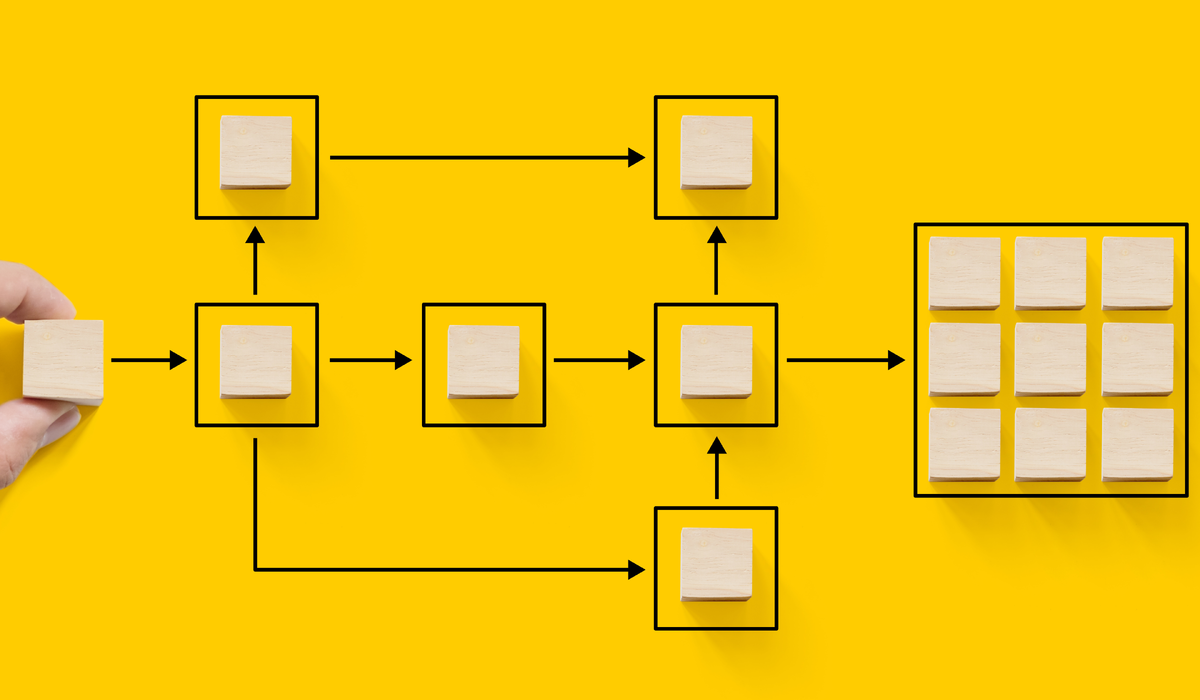SECTION
The Components of the Performance Management Process + Examples and a Handy PDF

Listen to this article:
Note: This article was updated on February 21, 2024, adding new content covering performance management examples, tips to help managers improve the performance management process, and a downloadable pdf with the most important elements of the process.
An effective performance management system is essential for evaluating and measuring employees’ work and helping them understand where they stand. People perform best when they feel valued, motivated, and supported, which is exactly what performance management aims to accomplish.
According to Gallup, only 2 in 10 employees say their performance is managed in a way that motivates them to do outstanding work. While most organizations use performance management systems in one way or another, many fail to recognize that employee performance management aims to promote positive workplace behaviors that drive productivity and success.
So, how do you create an effective performance management system that benefits both employers and employees?
This article will explain what performance management is, why taking it seriously is so important, and its key components. Plus, we’ll go over the performance management process steps and some performance management examples. Continue reading to be inspired to improve performance management in your business and team outcomes.
Components of the performance management process include:
- Planning
- Monitoring
- Developing
- Rating & rewarding
During a good performance management process, the four steps work together and build on top of each other to inform business and administrative decisions. And since they heavily influence other aspects such as purpose, autonomy, and mastery, they’re worth investigating more.
1. Planning
The first step in the performance management process is to set objectives and define your success metrics. This all happens following the company’s goals to ensure alignment and enjoy the benefits of compounded efforts.
However, goal-setting must be more than just a top-down process to succeed.
Teams and individual contributors need to have the opportunity to get involved, have their say, and buy into the whole process. This is a great way to avoid blind spots and build fairness into the entire process.
After planning, you should look at a roadmap ready to be implemented in the following quarters. Plus, everyone will know what performance expectations they're trying to fulfill and how they'll be evaluated.
2. Continuous monitoring
Playing on the idea that what gets measured gets done, continuous monitoring involves actively tracking and reporting the work done and potential hurdles. By doing so regularly, problems can be nipped in the bud. You can avoid a scenario where significant issues are only divulged at the end of the performance cycle when it's too late to do anything about them.
What’s more, monitoring reveals insights that can also be used to inform decisions and improve results.
| Regular one on one meetings are a great way to ensure communication lines remain open. |
3. Developing
During the monitoring stage, under or overperformance areas often come into focus, so development is when they get addressed. And while this is often a missing piece from the performance management puzzle, its absence comes at a high cost.
This third stage offers the chance to make employee development plans for ongoing education and training, lay out new assignments, and present the opportunity to take on more challenges. Plus, managers can offer coaching and feedback, creating the space for people to reach their potential and use all of their talents.
4. Rating & rewarding
Finally, the last piece of the performance management process is comparing the outcomes against the goals set in the beginning. Now everything gets rated, and rewards and kudos are shared.
Plus, this is the perfect opportunity to learn lessons about what affected or increased performance and adjust the course for the following quarters.
If all this has got you reflecting on your performance management process and how it might fail your team, there is a way to turn it around.
👉 Want to have the most important aspects of the performance management cycle in a nice pdf file? We got you: download the Performance Management Cycle PDF
Get familiar with the performance management cycle
Performance management is the process used to ensure a company connects its mission to the work of its people effectively and efficiently.
When performed correctly, performance management takes an organization from point A, its current state, to point B, the desired state of evolution.
Performance management used to be all about legal documentation, contract compliance, and risk mitigation in the past. Those are not very fun terms or the building blocks for a process meant to be popular with teams. But, as things are evolving, the focus is shifting.
You can now think of performance management as having two essential pillars:
👉 Evaluating the performance of employees
👉 Developing plans to help them grow
Why is the performance management plan important?
Before digging into the elements of performance management, we need to understand the importance of a performance management plan. An effective performance management system boosts team motivation and productivity while also helping to keep employees engaged.
Let’s see what the main reasons every organization should implement a performance management process are:
✅ Stimulates employee motivation. An effective performance management process boosts motivation, as everyone understands their role and contribution to the company’s success and is also offered opportunities for growth.
✅ Improves employee engagement and productivity. According to McKinsey, up to 55% of employee engagement is driven by non-financial recognition. As a result, companies that invest in performance management and give their people continuous feedback, development opportunities, and recognition will increase their chances of high engagement and productivity rates.

✅ Increases retention. A performance management system identifies and recognizes top performers. Such acknowledgment contributes to a culture of excellence that inspires people to deliver their best work. When people feel encouraged, appreciated, and recognized for their achievements, their morale increases. This makes employees want to stay with the company for extended periods.
✅ Sets clear expectations and goals. Performance management systems establish clear employee expectations and goals. When people managers and employees agree on deliverables and outcomes, the workplace environment becomes more agreeable. Clear objectives also help employees stay focused on what they need to achieve, which can increase productivity and improve performance.

✅ Identifies training needs. While a solid performance management system ensures top performers are not overlooked, it also identifies underperforming employees who need additional support or training. Underperformers can benefit from training sessions that are specifically tailored to meet their needs so that the organization can enable them to improve their output.
✅ Decreases micromanagement. Ultimately, a performance management system increases self-motivation and decreases micromanagement. Employees are more likely to be self-motivated when they know how their performance and productivity fit into the organization's short- and long-term goals and receive positive feedback for their efforts. This should thus lessen the desire to micromanage teams.
Performance management process steps
Navigating the complex terrain of performance management within a company demands a strategic approach that goes beyond mere observation to proactive intervention. It involves a structured process aimed at cultivating and sustaining optimal performance levels among employees.

Performance management examples
Here are two performance management examples that show how an IT company and an international school have successfully implemented the performance management process correctly.
Zitec is a software company specialized in online products and applications development that has approximately 350 employees today. Zitec’s performance management system focuses on long-term employee development.
The company adopted a continuous performance management process about promoting, evaluating, and improving team performance so that people feel in control of their development. The team constantly shares and requests feedback from peers inside and outside the organization using Mirro's employee feedback feature.
Transylvania College is a student-centered school offering a complete educational path. The school’s performance management system entails clear evaluation criteria and detailed feedback from peers, based on which supervisors can make informed decisions and provide insightful recommendations. Moreover, the evaluations are correlated with objectives, which gives the team structure and clarity.
What can HR leaders do to improve the performance management cycle?
As the custodians of organizational culture and employee development, HR leaders play a pivotal role in optimizing the performance management cycle. Here are several key performance management strategies HR leaders can employ:
1. Implementation strategies
We’ve already established that the components of the performance management process include planning, monitoring, developing, and rewarding.
HR leaders can develop tailored implementation strategies to effectively integrate and improve performance management components within their organization.
This may involve conducting training sessions, creating communication plans, and establishing clear implementation timelines to ensure successful adoption.
2. Tool evaluation
Evaluating software or tools that can facilitate various aspects of performance management is crucial. HR leaders should assess the features, scalability, and user-friendliness of potential tools to identify the best fit for their organization's needs and objectives.
For example, an HRIS platform that also has integrated performance management tools like Mirro is essential for modern businesses that want to improve the employee experience, while contributing to efficient operations and organizational success.
3. Benchmarking
Benchmarking the organization's current performance management process against industry standards or best practices can provide valuable insights. HR leaders can leverage benchmarking data to identify areas of strength and areas for improvement, informing strategic decision-making and driving continuous enhancement.
Go for effective performance management with Mirro
Mirro is a powerful performance management software that can help you achieve more than ever. It lets teams focus on what truly matters and deliver results by streamlining planning, goals, regular performance reviews, and documentation.
Mirro is successful because it facilitates alignment with company goals all year round. It also encourages people to step into their power and fulfill their potential.
Just imagine how powerful it would be to use Mirro and:
✅ Align efforts with the organization's mission;
✅ Clarify responsibilities and expectations;
✅ Enhance personal and group productivity.
✅ Highlight all contributions to success.
✅ Offer support and regular feedback.
✅ Improve HR communication.
✅ Improve communication.
✅ Offer a data-informed base for making decisions.
Effective performance management depends on the quality of your tools, so switch to Mirro today. You'll notice the difference right away. Start your Mirro demo today if you're ready to switch to an effective performance management system!





